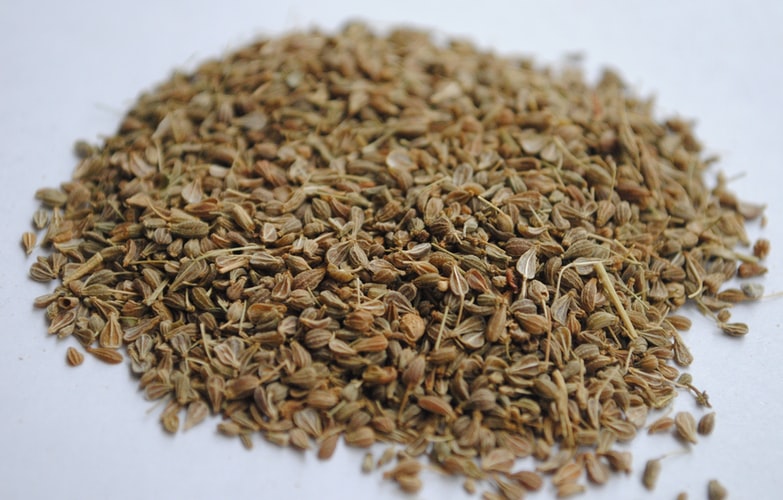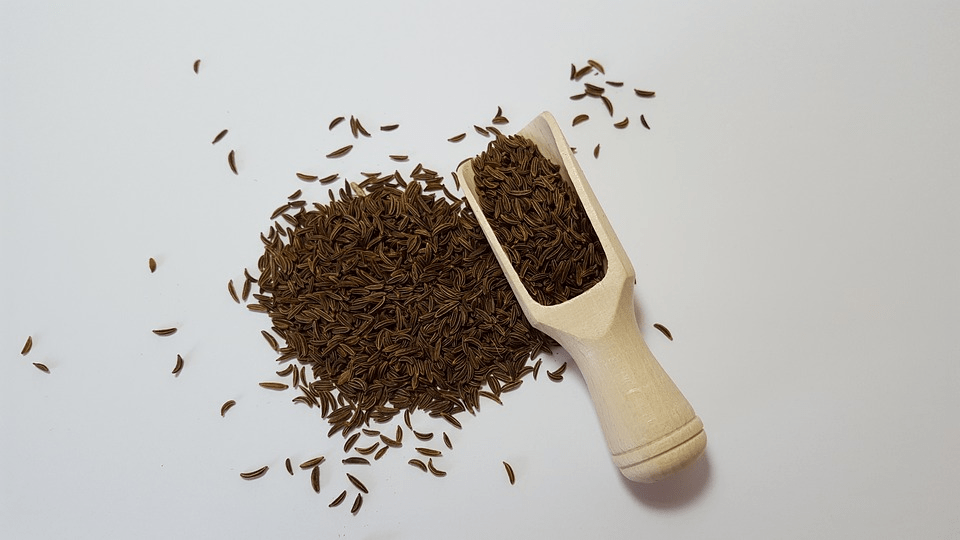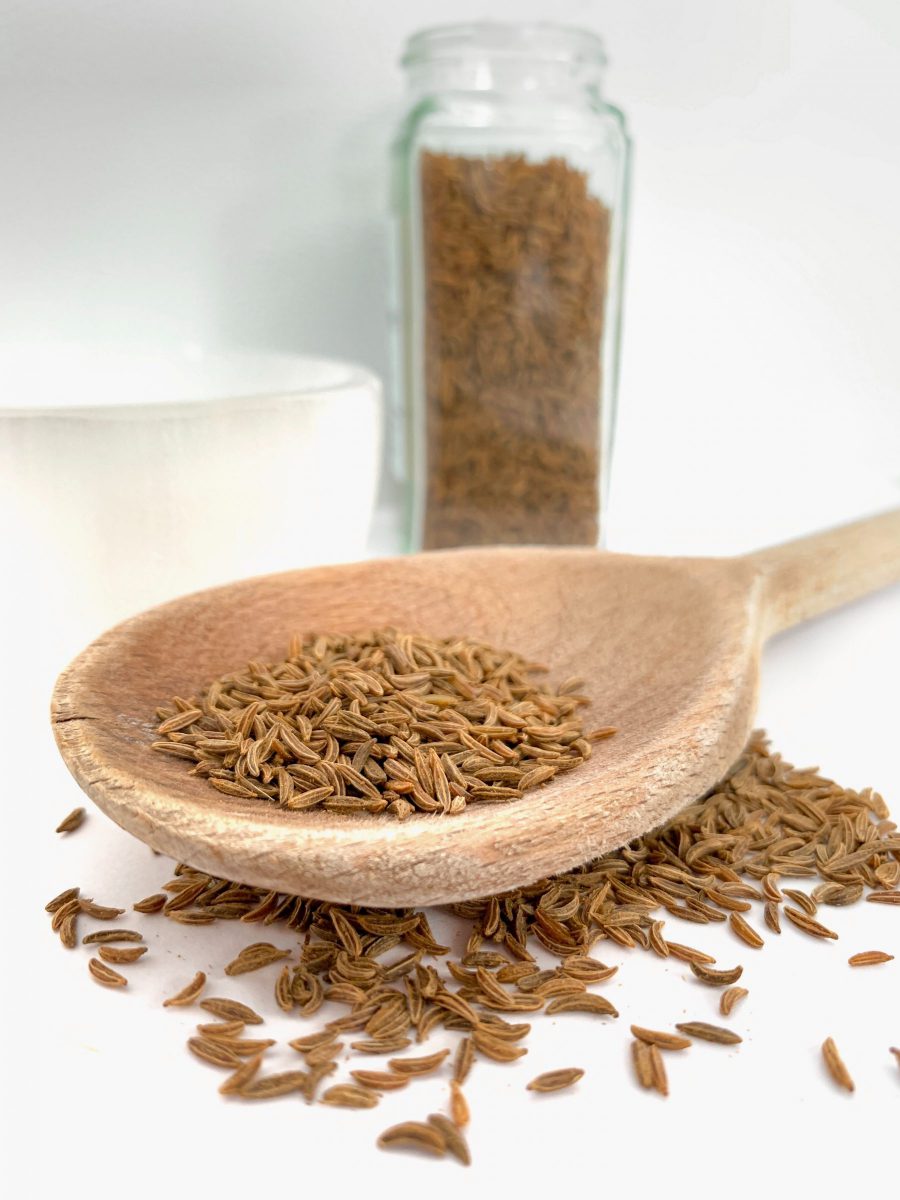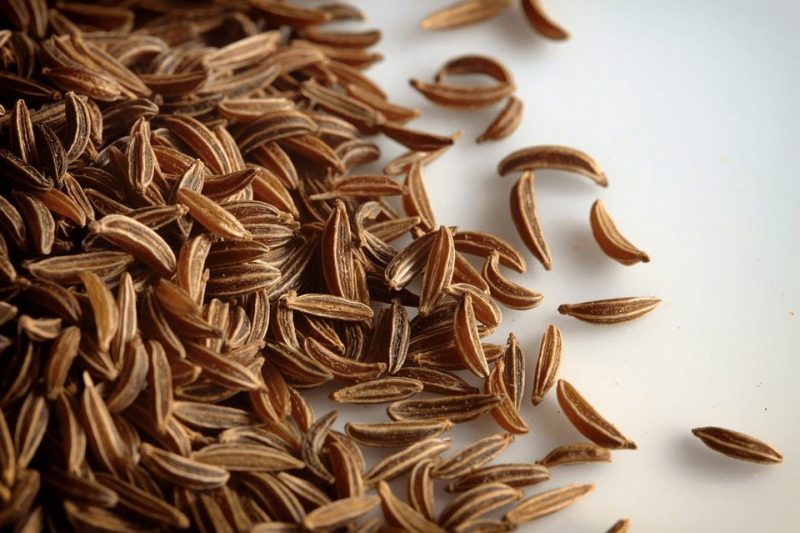Caraway – planting, growing, and harvesting

Caraway (Carum carvi) is a biennial plant and belongs to the Apiaceae family. The plant is widespread in Europe and West Asia and is used for seasoning dishes.
Caraway has been used since antiquity, being appreciated for the aromatic and medicinal qualities of its achenes (the caraway fruits).



Use
The used parts of the plant are fruits (achenes), being used as spices in various culinary dishes and for flavoring baked goods (pretzels, saltines).
It is used in the preparation of teas used against stomach ailments. The volatile oil is used in the soap and cosmetics industry. Caraway is also a good melliferous plant.
Botanical characteristics
The root is a taproot, well developed, it does not have many branchings and can penetrate deep into the soil. The stem is straight, without hairs, can reach a height of 50-100 cm, and has branches at the topside.
The leaves are alternatively arranged (placed on either side of the stem) and are finely branched. The flowers are white or pink and small in size. The fruits are oval-elongated achenes, brown.
Environmental requirements
Temperature. Caraway is not a temperature-demanding species. During the vegetative growth period, caraway needs temperatures between 16-17º C. During flowering and fruiting, the optimum temperature is 18-19º C.
Light. In the first year of vegetative growth, it does not have high requirements in terms of light. In the second year of vegetative growth, during the period of flowering and fruiting, the requirements for light increase. Periods with sunny and hot days help to accumulate the volatile oil in the fruit.
Humidity. The plant has normal humidity requirements in the first year of vegetative growth. In the second year, the requirements for humidity increase. Lack of water and the presence of dry winds have negative effects on the production and accumulation of volatile oil.
Substrate. It prefers light, humus-rich soils. Sandy or clayey soils are not recommended.
Cultivation
Soil preparation. After the early precursors, the plowing work is carried out (10-12 cm), followed by the basic plowing (28-30 cm), in autumn. After the late precursors, the basic plowing will be performed at the same depth. In the spring, a leveling of the plow will be performed, and the germination bed will be prepared with the combine.
Crop establishment. Caraway can be grown in pure or mixed culture (along with mustard, poppy, or peas). Sowing is recommended to take place in the spring, as soon as the soil moisture and temperature allow the setting up of the crop.
The sowing norm is 10-12 kg/ha, in pure culture and 8 kg/ha in mixed culture. The distance between the rows is 50 cm, and the sowing depth is 2-3 cm.
Recommended products
-
You can find products on a different store
Change Store -
You can find products on a different store
Change Store -
You can find products on a different store
Change Store -
You can find products on a different store
Change Store -
You can find products on a different store
Change Store -
You can find products on a different store
Change Store -
You can find products on a different store
Change Store -
You can find products on a different store
Change Store -
You can find products on a different store
Change Store -
You can find products on a different store
Change Store -
You can find products on a different store
Change Store -
You can find products on a different store
Change Store -
You can find products on a different store
Change Store -
You can find products on a different store
Change Store -
You can find products on a different store
Change Store -
You can find products on a different store
Change Store -
You can find products on a different store
Change Store -
You can find products on a different store
Change Store -
You can find products on a different store
Change Store -
You can find products on a different store
Change Store -
You can find products on a different store
Change Store -
You can find products on a different store
Change Store -
You can find products on a different store
Change Store -
You can find products on a different store
Change Store
Care
Fertilizing. Caraway reacts well to fertilizers application. Manure can be used in the first and second years of vegetative growth. Mineral fertilizers can be applied depending on the degree of soil supply with nutrients.
Recommended products
-
You can find products on a different store
Change Store -
You can find products on a different store
Change Store -
You can find products on a different store
Change Store -
You can find products on a different store
Change Store -
You can find products on a different store
Change Store -
You can find products on a different store
Change Store -
You can find products on a different store
Change Store -
You can find products on a different store
Change Store -
You can find products on a different store
Change Store -
You can find products on a different store
Change Store -
You can find products on a different store
Change Store -
You can find products on a different store
Change Store -
You can find products on a different store
Change Store -
You can find products on a different store
Change Store -
You can find products on a different store
Change Store -
You can find products on a different store
Change Store -
You can find products on a different store
Change Store -
You can find products on a different store
Change Store -
You can find products on a different store
Change Store -
You can find products on a different store
Change Store -
You can find products on a different store
Change Store -
You can find products on a different store
Change Store -
You can find products on a different store
Change Store -
You can find products on a different store
Change Store
Care works. As soon as the plants have sprouted, mechanical weeding or manual weeding has to be carried out. Depending on the number of weeds, you can use herbicides suitable for the crop.
Harvesting and storage
Harvest season. To avoid crop losses, it is important to choose the right time to harvest.
Manual harvesting should be done when 35-40% of the fruit is ripe. The fruit turns yellow-brown.
Mechanized harvesting should be done when 65-70% of the fruit is ripe. To avoid losses, it is advisable to harvest in the morning or evening.
Harvesting method. For manual harvesting, a sickle or scythe is used. The resulting plants are tied in bundles and placed in piles. When the fruits are fully ripe, threshing is carried out.
For mechanized harvesting, caraway is harvested using harvesting combines. The plants are left in the furrow for 4-5 days, then threshed.
Conditioning and drying. The threshed fruits are conditioned to remove impurities (weeds, plant remains). Conditioning can be done with the selector.
After conditioning, the fruits must be dried. They are laid in clean and airy spaces. The layer should not be thicker than 20-25 cm. Daily shoveling is recommended (1-2 times).
The caraway can be stored in dry and ventilated warehouses. The production can be packed in jute bags.
Diseases and pests
The main diseases are white rot, anthracnose, downy mildew, and powdery mildew.
Among the pests, the beet webworm and Opatrum sabulosum are the most frequent. Significant damage can also be caused by field mice.
Recommended products
-
You can find products on a different store
Change Store -
You can find products on a different store
Change Store -
You can find products on a different store
Change Store -
You can find products on a different store
Change Store -
You can find products on a different store
Change Store -
You can find products on a different store
Change Store -
You can find products on a different store
Change Store -
You can find products on a different store
Change Store -
You can find products on a different store
Change Store -
You can find products on a different store
Change Store -
You can find products on a different store
Change Store -
You can find products on a different store
Change Store -
You can find products on a different store
Change Store -
You can find products on a different store
Change Store -
You can find products on a different store
Change Store -
You can find products on a different store
Change Store -
You can find products on a different store
Change Store -
You can find products on a different store
Change Store -
You can find products on a different store
Change Store -
You can find products on a different store
Change Store -
You can find products on a different store
Change Store -
You can find products on a different store
Change Store -
You can find products on a different store
Change Store -
You can find products on a different store
Change Store















































































































































































































































































































































































































































